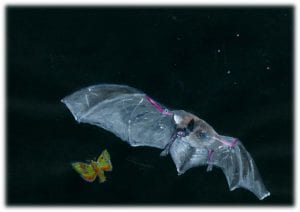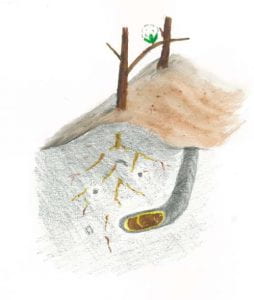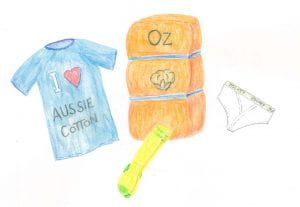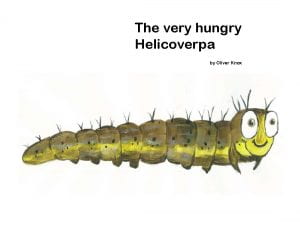Going back in time
In November of 2018 Oliver attended the CRDC’s people forum in Brisbane. The conversation and topics presented covered several aspects of the CRDC’s strategic investment in building adaptive capacity. During these discussions, Cotton Australia’s Ali Briggs said, ‘it would be nice if there were a few more resources for children.’
Now there are several resources out there such as; the Workboot series, ‘Cotton, the story of cotton farming in Australia’ (1997), which came out of the Kondinin Group book (and were supported by Cotton Australia, Blundstones, National Aus Bank and the NFF), ‘How are they made? T-shirts’, by Wendy Blaxland and published by MacMillan Library, and ‘Natural Threads’, for both primary and secondary schools published by Cotton Australia, which are great, but dated now.
However, Oliver’s thoughts turned to the fact that the current cotton industry is dominated by Genetically Modified (GM) cotton, which controls caterpillars of the pest moths, Helicoverpa armigera and Helicoverpa punctigera, by expressing insecticidal proteins. He then thought about the beneficial insects, which we encourage into our crops, he thought about insecticides, birds and viruses. All pretty gloomy for a caterpillar really, but then he thought of his favourite story about a caterpillar. Eric Carle’s, ‘The Very Hungry Caterpillar.’
Hatching a plan
Most of us are hopefully familiar with Eric’s epic story of ‘The Very Hungry Caterpillar’. Some of you may even know that 2019 marks the 50th anniversary of its publication. A few of you may appreciate the effort that went into the paper making that was central to the art of the story. However, I’d doubt any of you would know that there were five copies of the book, in three different formats, an animated DVD and two caterpillar soft toys in Oliver’s house. Suffice to say, the Knox’s were and remain fans of the book.
At the meeting a smile crept across Oliver’s face and when asked why he replied, ‘I was just thinking how the very hungry caterpillar would have been a very different story had the egg hatched in a modern cotton field.’
Giving voice to an idea
Once the idea was out there were a few who implied they might like to see what that story might look like. So over the Christmas and New Year period, Oliver drafted a story, picked up his sketch pad and produced cotton leaves and caterpillars in acrylic, watercolour and ink. Images were scanned, words were typed and a booklet compiled.
The result, an Eric Carle inspired, satirical and slightly dark look at the life and fate of very hungry helicoverpa caterpillars in a modern cotton field.

Bats are one of the natural predators of moths found on cotton farms. A bat can eat its body weight in moths in a night.
A bit of tummy ache
There have been some delays in making the work available for wider audiences, but these have now been overcome. The story, aimed at early school children, hopefully captures the plight of these insects in our crops. Most of the caterpillars don’t get to a ripe late instar and few become moths, but remember, that just a couple of decades ago, these insects almost destroyed the cotton industry in Australia. Additionally, understanding the fate of the caterpillars also helps appreciate the cotton industries resistance management plan, whilst the fate of many supports the wider insect and animal community.
The booklet closes with some thoughts about how the plight of the caterpillars can be used to develop some simple classroom games and activities. We hope ‘The very hungry Helicoverpa’ will deliver some enjoyment and improved understanding of the biology and ecology of caterpillars in today’s cotton fields.’






intersting post.thanks for sharing this content with us. https://virgoolshop.com/